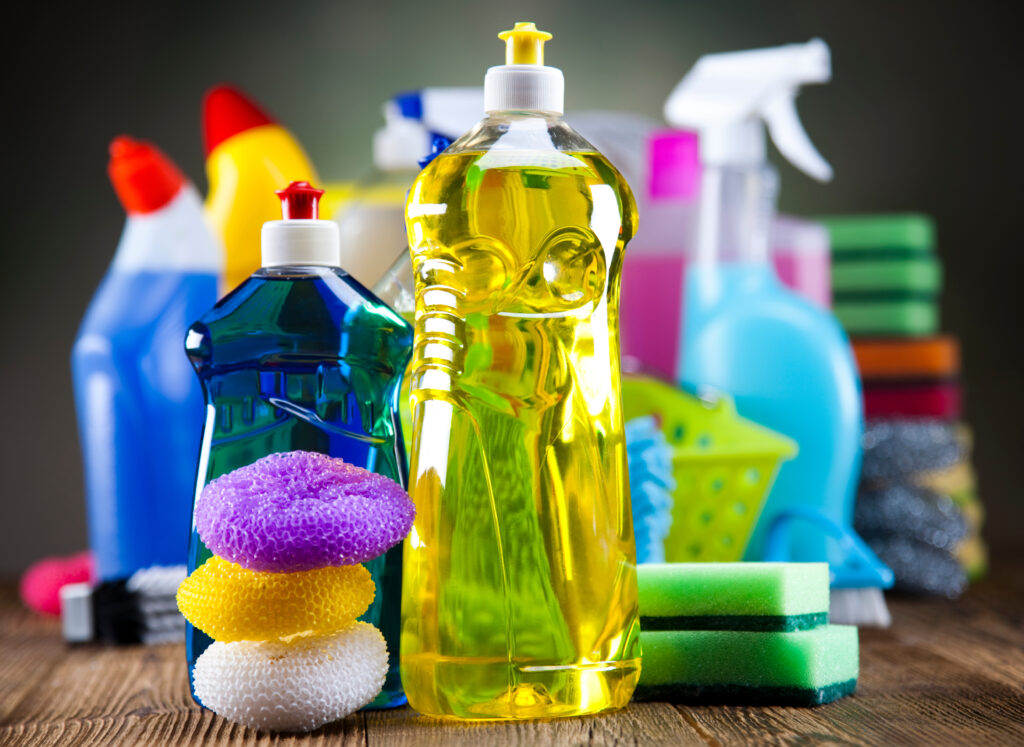Acetone is a solvent with a molecular structure that combines carbon, hydrogen, and oxygen. This solvent is widely used for industrial purposes and appears in many products for household use. With a few precautions, people can handle products containing acetone safely.
Acetone In Household Products
Nail polish remover comes to mind first when people talk about acetone in household products. The acetone works effectively at quickly breaking up the paint on nails so that it can be wiped off. A few household cleaners contain acetone, especially those for dissolving greasy residue.
The restoration of woodwork or furniture in a home may also expose people to acetone when they use varnish remover. Paint is another common product with acetone. The solvent helps to keep the paint at a spreadable consistency. Additionally, the fast evaporating quality of acetone helps paint dry faster.
Acetone use is also common among 3D printing hobbyists. They apply acetone to their creations to smooth away lines left by the production process.
Industrial Uses Of Acetone
Because many consumer products contain acetone, the factories that make the products use large amounts of acetone. Paint factories use it as an ingredient, and the process for making plastic involves solvents.
Many manufacturers rely on acetone and similar solvents for cleaning purposes. The solvent strips grime and residue from machine parts and vessels. Due to the large amount of solvents used by industry, manufacturers have a financial interest in recycling acetone instead of constantly buying new supplies.
What Are The Health Dangers Of Acetone Exposure?
The evaporation of acetone allows fumes to enter the human body through the respiratory system. Inhalation of the fumes places the substance almost instantly into the bloodstream. Skin contact also results in penetration of the chemical into the body.
Small exposures to acetone normally cause little to no irritation or harm. The human body actually produces acetone when metabolizing fat. A person cleaning off nail polish has little to worry about, but a worker in a nail salon who does it all day is experiencing constant exposure.
People regularly exposed to acetone can expect symptoms like stinging eyes and respiratory distress. Headaches, nausea, and increased heart rate become possible as exposure increases.
High exposures bring life-threatening problems. People start to have difficulty breathing. Excessive acetone in the bloodstream damages the kidneys. At its worst, acetone exposure causes seizures and death.
Safe Acetone Use In The Home
When painting or stripping varnish, ventilation is critical for reducing your exposure to fumes. Open the windows in the room that you are painting and run a fan to draw out the polluted air. A box fan moves a lot of air quickly and can be placed in temporary locations while working. Existing exhaust fans in a kitchen or bathroom, if they are near the work area, provide good ventilation as well.
Gloves are a good way to prevent most skin exposure. If acetone products splash or spatter onto skin, people should wash it off with soap and water as soon as possible.
A face mask works well to shield the respiratory system from fumes. People should wear them when working in a confined space, like painting a hallway or basement. When working with acetone products close to the face, a mask becomes even more important. 3D printing hobbyists will want to wear a mask when they do the closeup work of smoothing 3D printed objects.
The flammability of acetone presents another concern. People must never handle it near an open flame, like a gas cooking range or a gas furnace or water heater with a pilot flame.
Safe storage of acetone products requires putting them in a cool, dry place. Exposure to heat could create a fire risk even if the substance is in a closed container. Containers need to be tightly sealed as well to prevent fumes from leaking out.



